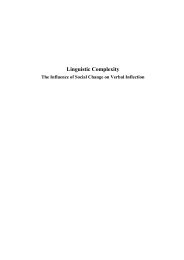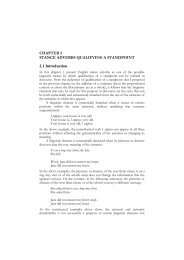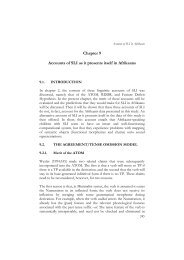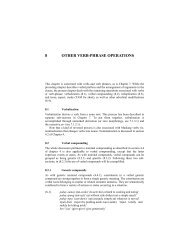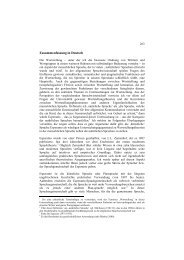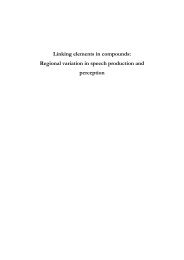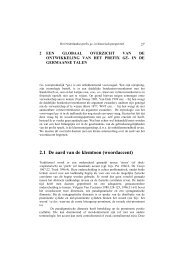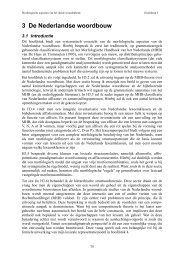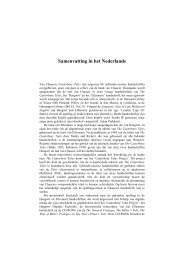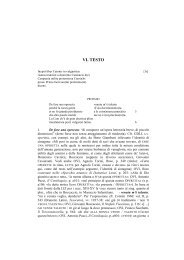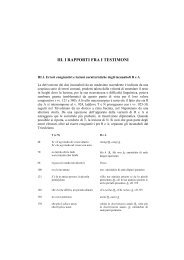Chapter 2 - LOT publications
Chapter 2 - LOT publications
Chapter 2 - LOT publications
Create successful ePaper yourself
Turn your PDF publications into a flip-book with our unique Google optimized e-Paper software.
<strong>Chapter</strong> 2<br />
4b. nam-ičč-i gurbaa fiig-s-e<br />
man-DET-NOM boy run- CAUS 1 -3M:PF<br />
‘The man made a boy run.’<br />
4c. Tarfaa-n nam-ičča-an gurbaa fiig-s-is-e<br />
Terfaa-NOM man-DET-INST boy run- CAUS 1 - CAUS 1 -3M:PF<br />
‘Tarfa made the man make a boy run.’<br />
(4a) is a structure of agentive intransitive event. In this structure gurbaa-n is the<br />
agent while fiig- ‘run’ is the verb. (4b) is a causative structure in which the causative<br />
morpheme –s- and the agent nam-ičč-i ‘the man’ are added to the structure of (4a).<br />
In (4c) the causative verb fiigs- ‘make run’ is further causativized by adding additional<br />
causative morpheme –is-. This time the agent Tarfaa-n is added as a causer<br />
of the event.<br />
Transitive verbs are also causativized and further re-causativized by adding causative<br />
morphemes and agentive subjects (see Owens 1985a):<br />
Owens 1985a: 6.<br />
5a. an Muusaa-n isa eeruu k’očč-isiis-is-e<br />
I Muusaa-INST him:ABS field till- CAUS 2 - CAUS 1 -3M:PF<br />
‘Through Musa I made him till a field.’<br />
5b. an Muusaa-n eeruu isa k’očč-isiis-is-e<br />
I Muusaa-INST field him:ABS till- CAUS 2 - CAUS 1 -3M:PF<br />
‘I made Musa make him till a field.’<br />
The verb k’očč-isiis- ‘make till’ is a causative verb of a transitive verb k’ot- ‘to till’<br />
while the double causative verb k’očč-isiis-is- ‘made make till’ is derived from the<br />
causative verb k’očč-isiis- ‘make till’. In both structures an ‘I’ and Musaa are<br />
causer and causee respectively. In (5a) the causee isa ‘him’ precedes the patient eeruu<br />
‘field’; while in (5b) the patient eeruu ‘field’ precedes the causee isa ‘him’.<br />
According to Owens, the difference between the two structures is semantic in the<br />
sense that in (5a) the intention of the causer is to get isa ‘him’ till the ground<br />
through Muusaa. In this case Muusaa is the intermediary participant for the action<br />
to take place. But in (5b) the intention of the causer is to get Muusaa (not another<br />
person) make the causee isa ‘him’ to till a field. In my dialect (Meč’a) there is no<br />
difference, in meaning between (5a) and (5b). It is possibly true for Harar, the dialect<br />
that Owens (1985a) studied.<br />
Generally, in Oromo the causative suffix is sequentially added to causative verbs to<br />
derive double and triple causatives. Of course, one question is posed at this juncture:<br />
what is the limit of extending the causativaization process? My observation is that<br />
double causative is common in Oromo; and triple causative is rare although the pos-<br />
16



